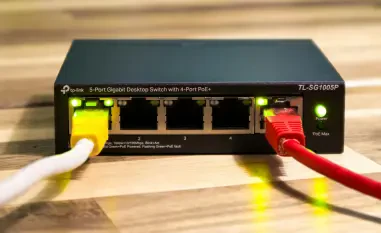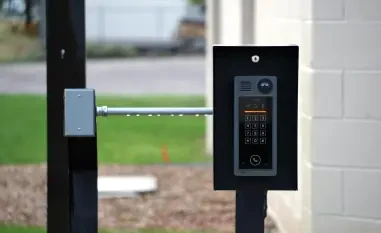In an era where digital connectivity underpins nearly every aspect of business and personal life, the rise of remote work, cloud adoption, and increasingly sophisticated cyber threats has exposed the fragility of traditional network security models. The notion of a secure perimeter, once considered a robust defense, no longer holds up against the realities of distributed workforces and multi-cloud environments. Enter the concept of secure-by-design, a transformative approach that embeds security into the very architecture of networks rather than treating it as an afterthought. This shift promises not just to mitigate risks but to redefine how connectivity and protection coexist in a rapidly evolving landscape. By exploring key principles like zero trust, innovative frameworks such as SASE and SSE, and forward-looking strategies for quantum-safe networking, this article delves into how secure-by-design is paving the way for resilient, future-ready systems that can withstand both current and emerging challenges.
Redefining Security with Zero Trust Principles
The foundation of secure-by-design networking rests on the zero trust model, a paradigm that rejects the outdated assumption of inherent safety within a corporate network. Instead, it mandates continuous verification of every user, device, and workload, regardless of their location or context. This approach has become essential as cyber attackers exploit vulnerabilities in legacy systems, often moving laterally within networks once a single breach occurs. Industry leaders view zero trust not merely as a trend but as a critical strategy for survival, especially in the wake of devastating ransomware attacks on vital infrastructure. The urgency to adopt this mindset stems from the recognition that trust can no longer be a default setting in an environment where threats are both external and internal. As organizations grapple with distributed teams and cloud-based resources, zero trust offers a proactive framework to ensure that no access is granted without rigorous authentication, thereby shrinking the attack surface and enhancing overall resilience against sophisticated threats.
Adopting zero trust, however, presents significant challenges that test both technical capabilities and organizational culture. Many companies struggle with entrenched beliefs that equate being inside the network with being safe, a mindset that hinders the shift to constant verification. Beyond cultural resistance, technical obstacles such as managing identities and segmenting networks pose substantial hurdles. Weak identity governance often emerges as a critical weak point, creating exploitable gaps that attackers can leverage to gain unauthorized access. Experts emphasize that underinvestment in verification tools and over-reliance on familiar solutions like firewalls exacerbate these vulnerabilities. Addressing these issues requires a commitment to robust identity management systems and a willingness to reallocate resources toward continuous monitoring. Only by overcoming these barriers can organizations fully embrace zero trust as the cornerstone of a secure-by-design architecture, ensuring that security is not just a layer but an intrinsic part of every network interaction.
Unifying Access and Protection with SASE and SSE
Secure Access Service Edge (SASE) and Security Service Edge (SSE) represent pivotal frameworks in translating zero trust principles into actionable network architectures. These cloud-delivered solutions integrate networking and security functions, providing consistent policy enforcement across diverse environments—whether users are in corporate offices, remote locations, or public spaces. The rise of hybrid work has made such uniformity indispensable, as fragmented security measures often leave gaps that attackers can exploit. SASE and SSE address this by creating a cohesive system where access and protection are not siloed but intertwined, ensuring that employees can connect securely regardless of their physical location. Enhanced by AI-driven threat detection and automated policy management, these frameworks are tailored to meet the demands of modern, distributed workforces while maintaining a high standard of defense against evolving cyber risks.
Despite their promise, transitioning to SASE and SSE is far from seamless, as organizations encounter a range of implementation challenges. Policy sprawl, where conflicting rules across different platforms create confusion, often undermines the effectiveness of these frameworks. Additionally, overly stringent security measures can degrade user experience, leading to frustration and potential workarounds that compromise safety. Striking a balance between robust protection and usability remains a critical concern, as employees are less likely to adhere to protocols that hinder productivity. Industry insights suggest that leveraging automation and AI tools can help mitigate these issues by streamlining access controls and proactively identifying threats without imposing unnecessary burdens on users. Successful adoption of SASE and SSE hinges on designing systems that prioritize both security and efficiency, ensuring that the benefits of secure-by-design networking are realized without alienating the very workforce they aim to protect.
Anticipating Threats with Quantum-Safe Strategies
As networking evolves, the looming threat of quantum computing introduces a new dimension of risk to current encryption standards, which could be rendered obsolete by future advancements. Adversaries employing a “harvest now, decrypt later” tactic might collect encrypted data today, waiting for quantum capabilities to unlock it tomorrow, posing a severe danger to industries like banking, healthcare, and government where data sensitivity is paramount. Although practical quantum computers remain on the horizon, the potential impact on security compels organizations to act preemptively. The concept of crypto-agility—being able to swiftly adapt cryptographic methods—has emerged as a vital strategy to counter this threat. By preparing now, companies can safeguard long-lived data against a future where traditional encryption no longer provides adequate protection, ensuring continuity in an era of technological disruption.
Practical steps toward quantum-safe networking involve a blend of immediate actions and long-term planning to build resilience. Organizations are encouraged to inventory their current cryptographic practices and begin testing quantum-resistant algorithms in controlled, low-risk environments. Symmetric key techniques, which offer greater immediate strength against quantum threats, are also gaining attention as a stopgap measure. Experts advocate for a hybrid approach, combining existing standards with emerging solutions to create a layered defense. This proactive stance not only mitigates future risks but also positions companies as forward-thinkers in a landscape where security must evolve alongside technology. The focus on gradual preparation, rather than abrupt overhauls, allows for a measured transition that balances current operational needs with the imperative to stay ahead of quantum advancements, ensuring that networks remain secure in the face of unprecedented challenges.
Envisioning a Seamless Security Future
The future of networking lies in the convergence of zero trust, SASE/SSE frameworks, and quantum-safe technologies into a unified, resilient system that operates seamlessly across all environments. This integration, bolstered by AI-driven policies and advanced key management, aims to create networks where security is not an add-on but an inherent feature. The concept of “invisible security” is increasingly seen as the ideal outcome—protective measures that function in the background without disrupting business operations or user experience. Such a vision reflects a broader industry shift toward holistic, software-defined networks where the lines between connectivity and defense blur. Achieving this requires not just technological innovation but a fundamental reimagining of how security is perceived, moving from a reactive necessity to a proactive, continuous component of every digital interaction.
Beyond technology, cultural and operational barriers stand as significant obstacles to realizing this converged future of secure-by-design networking. Resistance to change, often rooted in familiarity with legacy systems, slows the adoption of new paradigms, while a lack of leadership buy-in can stall necessary investments. Operationalizing security at scale—particularly in managing identities and enforcing policies across diverse environments—demands automation to handle complexity without human error. Addressing these non-technical challenges is as crucial as deploying cutting-edge tools, as cultural evolution must parallel technological progress. By fostering a mindset that prioritizes resilience over convenience and by committing to scalable solutions, organizations can pave the way for a networking landscape where security is both omnipresent and unobtrusive, setting a new standard for digital connectivity in an ever-changing threat environment.
Building Tomorrow’s Resilient Networks
Reflecting on the journey of secure-by-design networking, it’s evident that the industry has taken bold strides to move beyond reactive, perimeter-based defenses toward proactive, integrated models. Zero trust emerged as a non-negotiable foundation, supported by frameworks like SASE and SSE that unified security across fragmented landscapes. Preparations for quantum threats underscored a commitment to long-term resilience, even as cultural and operational challenges tested resolve. Looking ahead, the next steps involve sustained investment in automation to scale identity management and policy enforcement effectively. Prioritizing user-centric design will ensure compliance without sacrificing productivity, while ongoing experimentation with quantum-safe methods will fortify defenses against future risks. The path forward demands a collaborative push toward convergence, where security and networking become indistinguishable, offering a blueprint for adaptable systems that protect as seamlessly as they connect in an increasingly complex digital world.













